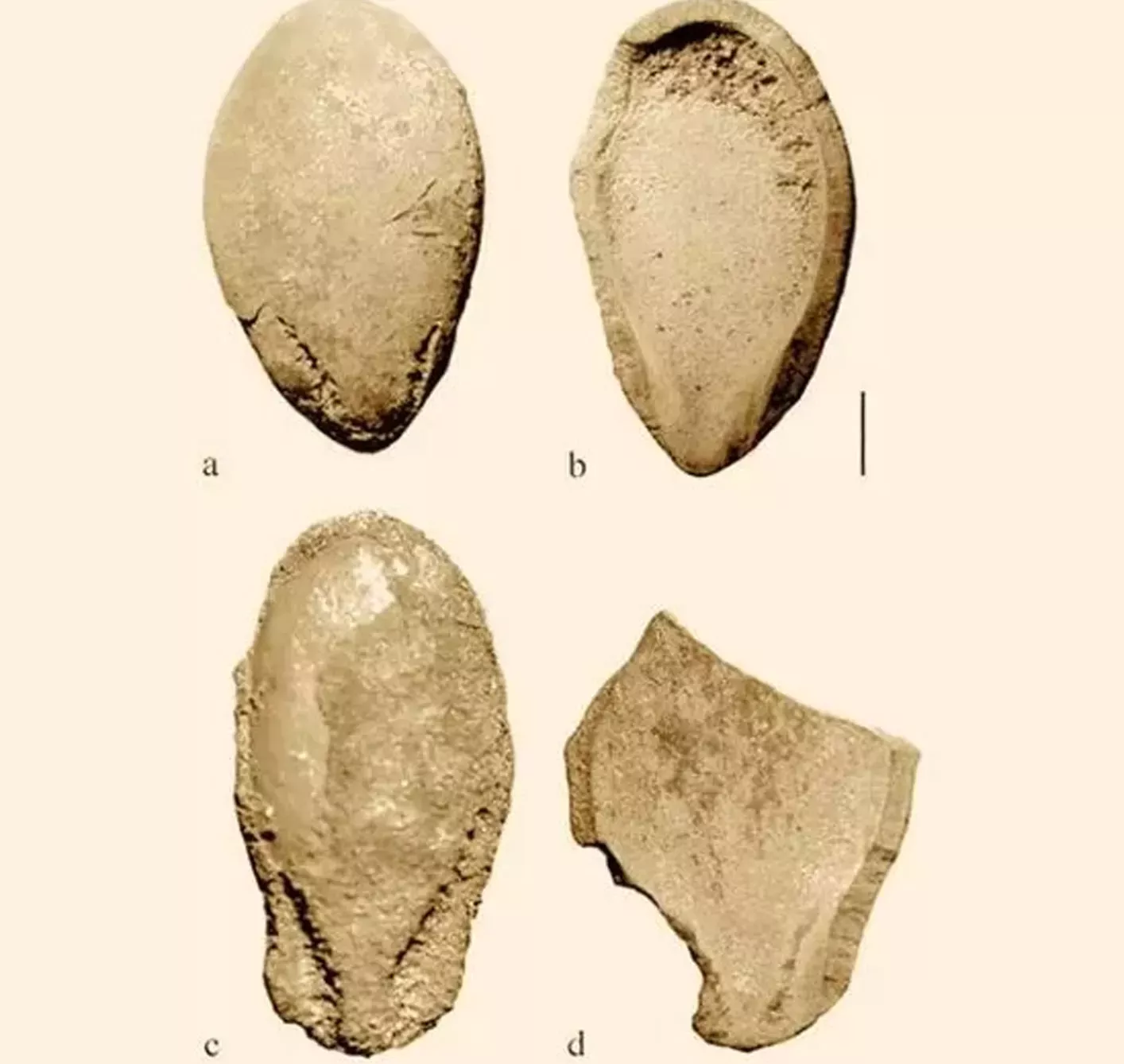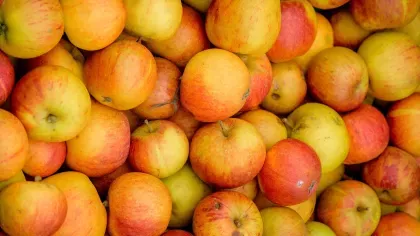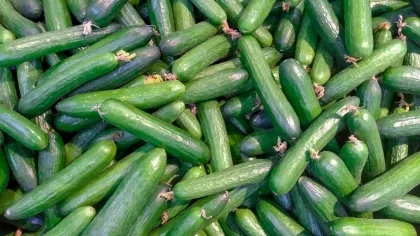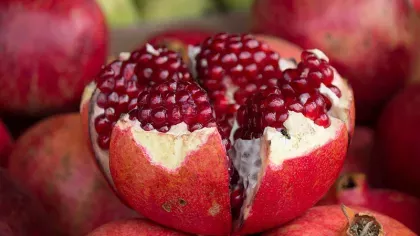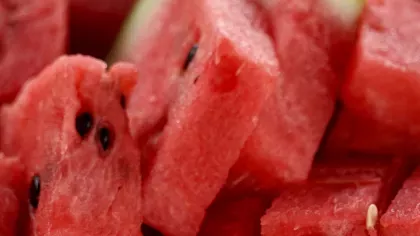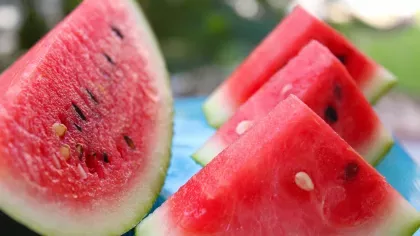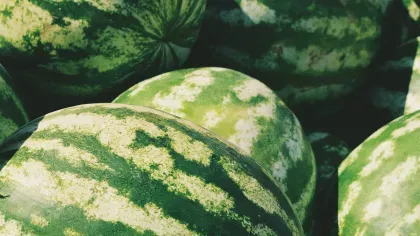
Watermelon
On this page
Botanically the biggest berry in the world, the watermelon is a highly sought after summer snack.
The most popular variety, Citrullus lanatus subsp. vulgaris, is widely grown for its tasty red flesh and high-water content.
Watermelon seeds and leaves have been found in ancient Egyptian tombs, suggesting it was cultivated there more than 5,000 years ago. But until recently, the specific origins have remained shrouded in mystery.
Recent work from scientists at Kew gardens and the University of Munich found that seeds from a close relative of the watermelon were being eaten in Libya as far back as 6000 years ago.
Watermelon is a member of the gourd family Curcurbitaceae, along with pumpkins (Cucurbita pepo), cucumbers (Cucumis saticus) and the luffa plant (Luffa aegyptiaca)
Plant description
Watermelons grow across the ground annually, as a hairy stem up to 10m long. The leaves are hairy, with three to five lobes, and grow around 20cm long and wide on stalks around 20cm long. The flowers are yellow and grow on short stalks from the tendrils. The fruits are mottled or striped green, with red, pink or yellow flesh. Wild watermelon fruits tend to be smaller than cultivated ones, which can grow up to 70cm long. The seeds are smooth and flat.




Plant uses
Food and drink
Watermelons are grown commercially for their refreshing, sweet fruits, which are eaten as fresh fruit, alone or as part of fruit salads or other desserts.
In some African cuisines, the fruit and leaves are cooked and eaten as a vegetable.
In Eastern European countries, watermelon juice is fermented to produce an alcoholic beverage.
Wild watermelons are collected as a source of water in the Kalahari region of southern Africa.
Watermelon seeds are sold in West African markets as egusi. These can be chewed as a snack, or roasted and ground to a pulp, which is added to soup or made into sauce or porridge.
In Asian countries, watermelon seeds are eaten dry or roasted as a snack food or as an ingredient in soups.
In some parts of India, watermelon seeds are ground into flour and baked as bread.
The seeds are pressed to produce oil for cooking.
The seeds can be roasted and used as a coffee-substitute.
Health
Traditional African medicines use watermelon pulp and juice as a diuretic.
Watermelon is used in Northern Sudan as a treatment for burns, swellings, rheumatism and gout.
Materials and fuels
The leaves, fruit rind and left-over seed material from making oil can all be used as animal feed.
Did you know?
The species name of lanatus (meaning woolly) refers to the woolly hairs on young parts of the plants, particularly the stems.
Botanically, a watermelon is a pepo, which is a berry with a hard outer rind, like a pumpkin
Where in the world?

Grassland and bushland, mostly on sandy soils, and often along watercourses or near water, up to 1,785 m above sea level. It flourishes in dry climates and requires only limited rainfall.
Our work
For scientists, watermelons are a crop with a mysterious history. It’s generally accepted by the scientific community that watermelons originated in Africa, but exactly where they were domesticated from a bitter-tasting wild fruit into a sweet-tasting one is hotly debated.
Evidence gathered from DNA suggests that the closest relative is the Kordofan melon (C. lanatus subsp. cordophanus) and ancient tomb paintings show that Egyptians were consuming watermelon in the Nile Valley in 4360 BP.
However, with the discovery of ancient watermelon seeds at an archaeological site in the Sahara Desert in Libya, we are now reconsidering its origin.
Working with partners from the UK, Germany and US, Kew scientists were able to obtain genome sequences using the seeds in addition to watermelon specimens held in Kew’s Herbarium, some of which date back to the early 19th century.
Our results showed that the seeds came from a watermelon relative known as the egusi watermelon or egusi gourd (Citrullus mucosospermus), from West Africa. The raw fruits are bitter and inedible, due to the chemical cucurbitacin in their flesh and are instead grown for their seeds, which are similar in size and flavour to pumpkin seeds.
